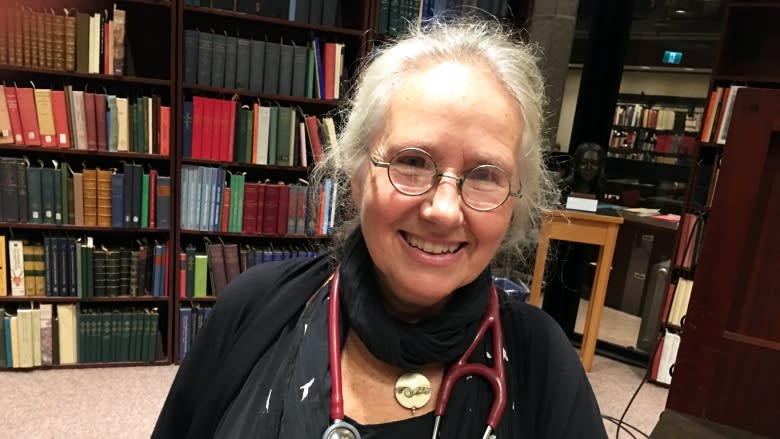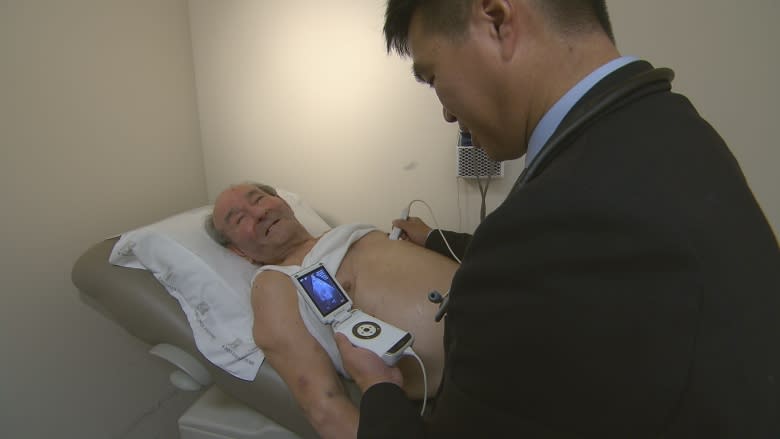As the stethoscope turns 200, is the iconic device becoming obsolete?
Credit a modest 19th-century Parisian doctor for having invented the stethoscope.
In 1816, while examining a female patient with heart disease, Dr. René Laennec faced a conundrum: He needed to hear what was ailing her but was reluctant to press his ear to the woman's chest.
So, the clever doctor improvised, rolling up a notebook into a tight cylinder. He put one end on his patient's chest and the other to his ear.
"And he heard, lub-dub, lub-dub, lub-dub, the sound of the heart," says medical historian Dr. Jacalyn Duffin.
"He was so excited that he went back to the hospital and got all his students rolling up their notebooks and sealing them with wax. And [they] went around listening to all the patients.
"It's one of the top inventions in medical history."
The stethoscope changed the way doctors and nurses would treat patients. For the first time, they were able to listen and hear all of the noises from within the body. Besides listening to the sounds of the heart, the stethoscope is also used in diagnosing diseases of the lungs and bowels.
"Nobody could really figure out what was going on inside the body," said Duffin. "They had a hunch that anatomy was important, but chest diseases were the No. 1 killer, and the chest is a rigid box that doesn't yield any of its secrets."
Laennec soon discarded the rolled up notebook and fashioned a new wooden, cylinder-shaped stethoscope. The two-eared rubber-tubing version now standard in hospitals around the world came later, in the 1850s — decades after Laennec's death.
And now, on the 200th anniversary of this iconic invention, a great debate is on: In this age of digital gadgets, is Laennec's stethoscope on its last heartbeat?
Stethoscope 'at a crossroads'
"We're at a crossroads right now where the technology has advanced tremendously," Chi-Ming Chow, a cardiologist at Toronto's St. Michael's Hospital, told CBC News.
For example, he says, you can now check a patient's heartbeat with a hand-held ultrasound, small enough to fit in a lab coat pocket. And the device produces images of the heart in real time.
"We can look at the function of the heart, as well as the valves, what is leaking or narrowed — and try to correlate what we have with the patient's complaint," Chow said.
"We can actually walk around with a cardiac ultrasound. We can do it on rounds, as well as in emergency rooms when we see patients."
Ultrasound apps are also used on smartphones or tablets, he says, allowing doctors to email test results directly to patients.
A U.S. study conducted two years ago compared hand-held ultrasound devices with physical examination. It found that ultrasound devices correctly identified 82 per cent of patients with heart abnormalities while a physical exam had a 47-per-cent rate of successful identification.
The authors concluded that hand-held devices provided a "more accurate diagnosis" than physical exams.
Around the same time, Dr. Sanjiv Kaul of Oregon Health and Science University asked in a 2014 editorial whether it was time to get rid of the antiquated stethoscope.
Pocket ultrasound devices provide high-quality diagnostic images, he wrote, adding that the devices are easier to use and more accurate than the stethoscope.
"It is time to discard the inaccurate albeit iconic stethoscope and join the rest of mankind in the technology revolution!" Kaul wrote.
But does this spell the end for the stethoscope? Duffin doesn't think so. "I'm fond of the stethoscope. I think it's a wonderful device."
And it's a device, she says, that keeps the doctor-patient bond alive.
"It forces the hands upon the patient to slow down, to spend quiet moments with the patient, Duffin said. "If you're doing something quickly with a device that is remote, you are distancing yourself from the patient and reducing the ability to communicate."




